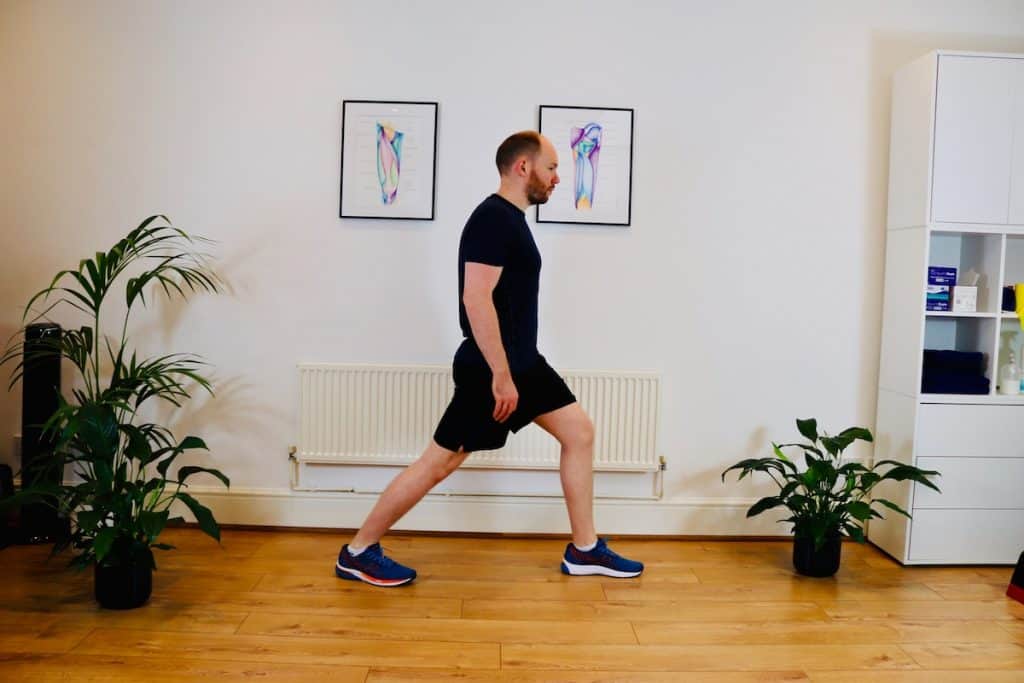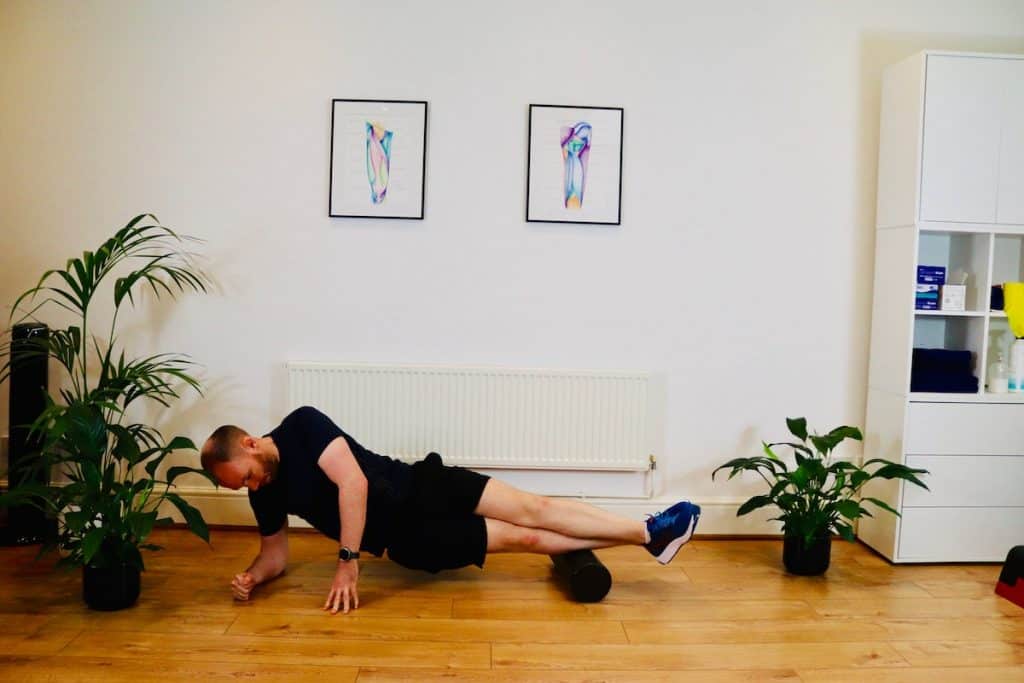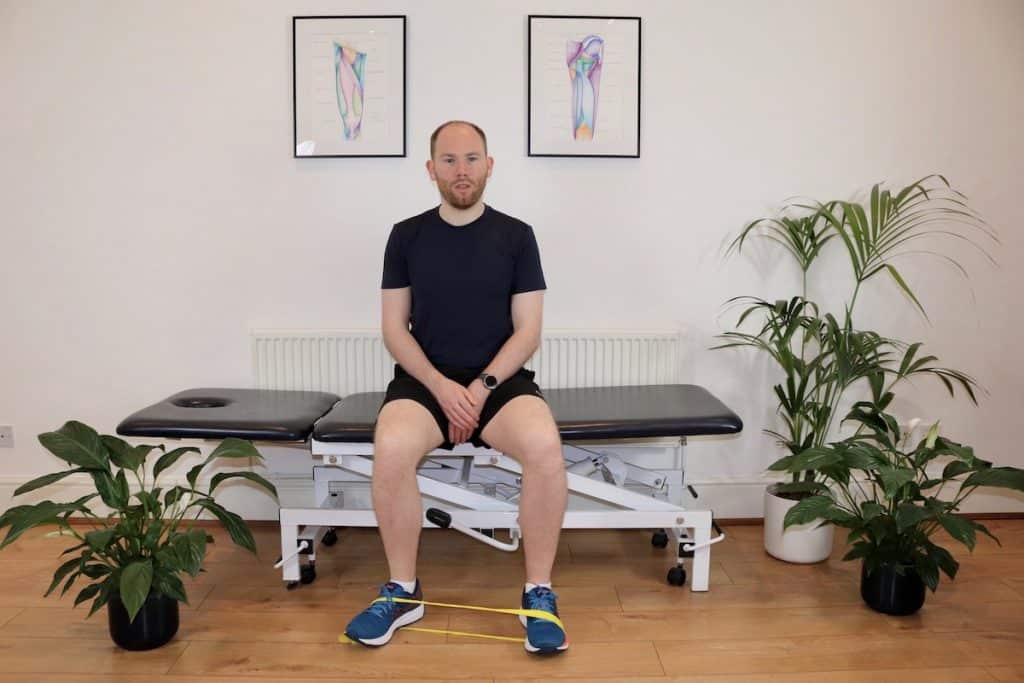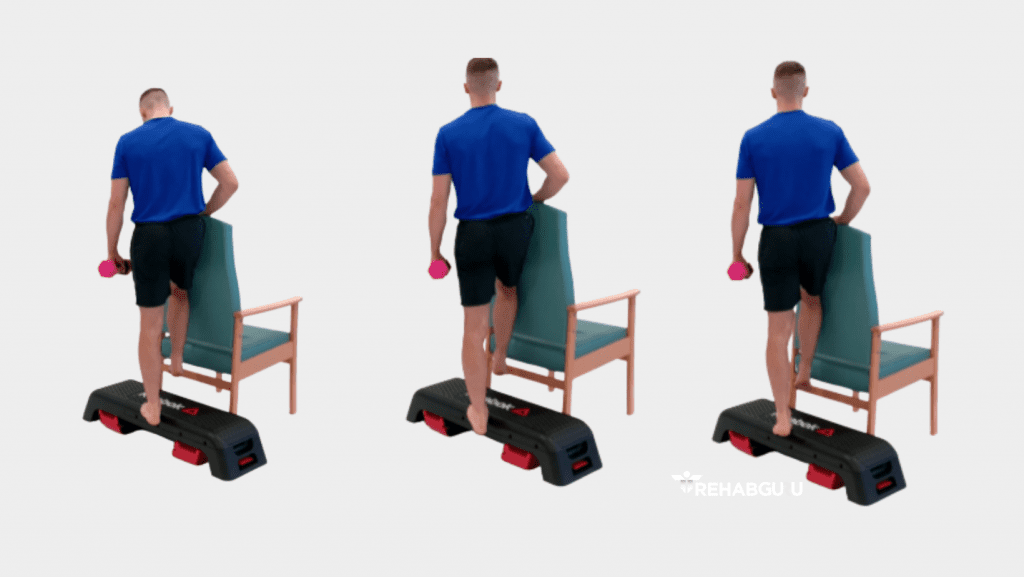Peroneal Tendon Tear
Read More >
Peroneal Tendonitis is associated with pain on the outside of the ankle and foot. Clinically, we know that the best treatment for this condition is a graded strengthening programme under the guidance of a Physical Therapist.
Other adjuncts to rehabilitation from Peroneal Tendonitis include insoles, braces, and the appropriate footwear.
This article will provide you with the exercises we often provide to our patients with Peroneal Tendonitis. Before commencing, it is essential to seek independent medical advice.
Ankle and leg stretches are extremely important for a normal gait. Stretching helps lengthen muscles and tendons to a full range of motion through the ankle.
Your soleus muscle is part of your calf muscle group and plays a vital role in walking and running. The tighter your soleus is, the quicker you transition onto your big toe.
How to perform:

Your Gastrocneumius is the second major muscle in your calf muscle group. It can be helpful to stretch this as well.
How to perform:

Keeping your peroneal tendons mobile and flexible can reduce tension and pain levels.
How to perform:

The peroneal muscles are on the outer side of your ankle. It helps to turn your foot outwards and is a key stabiliser of the ankle.
How to perform:

Following the band exercises, you can progress onto weight-bearing exercises for greater benefit.
How to perform:

In our experience, you should avoid impact exercises such as running, hopping, and jumping if you have Peroneal Tendonitis.
If possible, you should avoid hiking, walking on uneven surfaces or uphill walking.
If you have severe symptoms of Peroneal Tendonitis, consider non-impact cardiovascular exercises such as swimming, cycling or using the elliptical to maintain your fitness.
This article is written by James McCormack, a Lower Limb Specialist who is an expert in treating Peroneal Tendonitis.
This is not medical advice. We recommend a consultation with a medical professional such as James McCormack if you are experiencing any of the symptoms discussed in this article. James offers Online Physiotherapy Appointments weekly and face-to-face appointments in his London clinic.